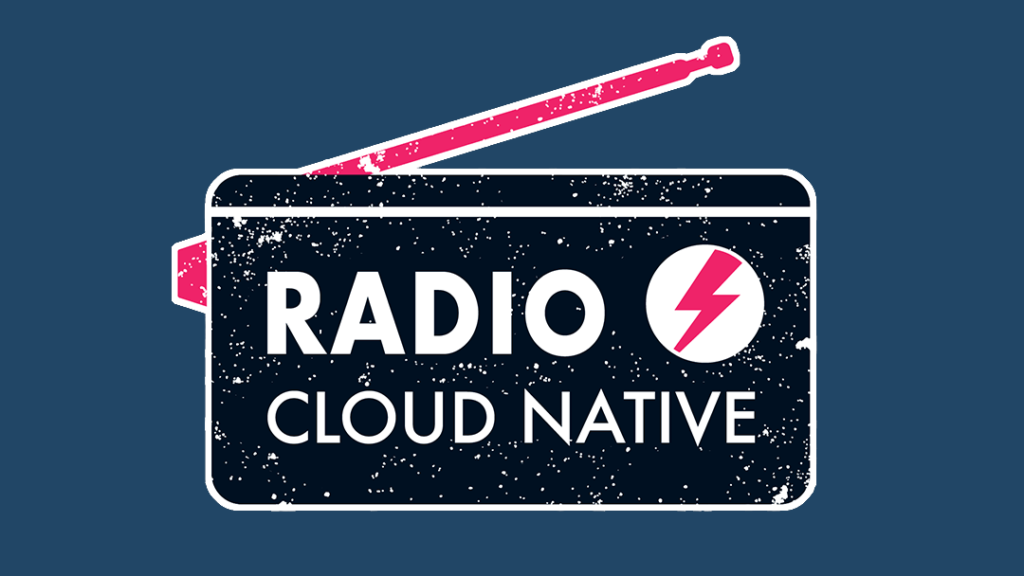Microsoft launches Azure Health Data Services to unify health data and power AI in the cloud
Today, we take a giant step toward making the dream of interoperability in healthcare real. Microsoft is announcing the general availability of Azure Health Data Services, a platform as a service (PaaS) offering designed exclusively to support Protected Health Information (PHI) in the cloud. Azure Health Data Services is a new way of working with unified data—providing your team with a platform to support both transactional and analytical workloads from the same data store and enabling cloud computing to transform how we develop and deliver AI across the healthcare ecosystem.
Imagine this scenario:
"Give me all the medications prescribed and connected home health device data with all the CT Scan documents and their associated radiology reports for any patient older than 45 with a diagnosis of osteosarcoma over the last 2 years."
The above statement is a common request to health data managers. It may come from physicians, clinical researchers, or data scientists, but this type of request in today’s systems can often take days or even months as health systems have to query multiple data stores that don’t speak the same language, then extract the data files, and finally work to unify them in batches for the user. Different types of health data are stored in siloed formats and databases—structured data like medications and patient attributes in pharma or EHR databases, CT scans in DICOM format, radiology reports as unstructured text, and medical device data in a separate data estate. By the time all the data is finally organized for use, the information is stale. With Azure Health Data Service, queries like these can be filled in minutes and the data can be connected to the places you need.
Azure Health Data Services is the first of its kind to unify diverse data types in the same data store at the patient level as you bring it into the cloud, which means you can view structured, unstructured, and imaging data together for a holistic, real-time view—in just minutes. With the service, you can search and query across your data using a unified Fast Healthcare Interoperability Resources (FHIR®) structure and deploy a suite of services to connect it rapidly to the technology you need. Whether you’re blending patient data with population health data sets for AI development and analytics, visualizing data for operational efficiencies, deploying patient engagement tools for personalized care, or querying imaging metadata alongside clinical data using our new DICOMcast feature, Azure Health Data Services work with your existing systems to enhance what you’re doing today. It’s also built on open standards to ensure you can support new solutions and innovations yet to come.
Watch the video below to learn more.
Accelerate interoperability and innovation with your data in Azure Health Data Services
Provides a suite of health data APIs enabling you to securely ingest and unify PHI in the cloud and persist it within a compliance boundary in Azure.
FHIR service for management of clinical data.
Tools to enable the transformation of data in HL7v2, CDA, JSON, or CSV formats to FHIR.
Digital Imaging and Communications in Medicine (DICOM) service for management of imaging data.
DICOMcast technology extracts metadata from DICOM instances and integrates it with other clinical data in the FHIR store enabling a single quarriable dataset.
Streaming data from MedTech devices can be ingested and transformed to FHIR, with templates to capture data from Apple HealthKit, Google Fit, and Fitbit.
Unstructured data from clinical notes or health documents can connect and map to FHIR through Text Analytics for health structuring to FHIR for viewing in context with clinical data records at the patient level.
Enables tools for data management, de-identification, event notification, and transformation of data for downstream use. A logical workspace in Azure Health Data Services enables you to manage your FHIR, DICOM, and MedTech services with common configuration across services, and integration with other Azure services.
Connects your PHI data to powerful technology in the Microsoft Cloud for Healthcare ecosystem. Deep analytics and AI development begin with one click to push PHI data to Azure Synapse Analytics using the Synapse Link for FHIR, where you can send it to Microsoft Power BI for data visualization, or to Microsoft Teams and Microsoft Dynamics 365 for operational and engagement tools.
Enlists trust with layered, in-depth defense and advanced threat protection aligned with strict industry compliance standards and regulatory requirements, including ISO, GDPR, HITRUST CSF, and HIPAA through BAA coverage. Azure Health Data Services helps providers and payors meet the requirements of the 21st Century Cures Act and CMS Interoperability and Patient Access final rules.
Lowers costs in the cloud with a consumption-based pricing model that gives you full transparency with a pay-only-for-what-you-use structure. Azure Health Data Services removes infrastructure costs associated with multiple accounts, only charging for storage, API calls, transformation, and conversion as used, which means you can try the service for smaller workloads and control costs as you add more complex workloads. If you are just getting started, we have also made it developer-friendly by providing monthly entitlements for usage and storage at lower limits, so it is easy to innovate and explore.
Azure Health Data Services sits at the heart of the Microsoft Cloud for Healthcare as your foundation for PHI data in the cloud.
How did we build Azure Health Data Services?
We started with the patient. Whether you are working with data in healthcare settings, life sciences, or clinical research, bringing data together in a longitudinal record is powerful, but complex. Too much time is spent trying to unify data, and we wanted to simplify that process so our customers could focus their development dollars on what matters most: improving the delivery of clinical and operational care, fueling precision medicine workflows, and enabling rapid collaboration and research innovation across the health ecosystem.
We listened to our partners and customers in the health industry. The foundation of Azure Health Data Services is about removing barriers to working with health data. It starts with giving organizations trusted security that allows you to apply the security, access, and control you need for PHI so everyone in your organization can move faster. Azure Health Data Services platform allows developers to scale in the cloud quickly, provides tools for data scientists to de-identify and export for research, and allows end users to connect to solutions and apps with SMART on FHIR and Microsoft Power Platform to design and power front end solutions.
We built it for the future. There are a lot of ways to bring data to the cloud. Rather than just create a platform to ‘lift and shift’ data silos into a lake, we wanted a place where our customers could harmonize data around open-source standards like HL7 FHIR and DICOM as it came into the cloud. Organization around these open standards accelerates downstream innovation and interoperability across the entire health ecosystem. And with your PHI data in a compliant boundary in the cloud, you can support both transactional and analytical processing from the same data store. That is important because health data is projected to grow at a compounded annual growth rate (CAGR) of 36 percent through 20251 and building for the future of healthcare means setting up your architecture for efficiency and scale.
We built it with trust. Thousands of developers and customers are already using Azure Health Data Services in production around the world. It is powerful to see our cloud technology bringing together collaboration in clinical research, pharma, healthcare, MedTech, and life sciences. We are honored that they chose Azure for their health data, and we are even more inspired by what they are already doing with our platform to transform the future of health.
“There are several areas where cloud technology like Azure Health Data Services can help enhance healthcare. I believe it will play a critical role between various systems, allowing us to take data from health records and other data sources and combine it together in a centralized place where it can be used to inform and deliver patient-centric care. It also can enable real-time complex deep learning – by normalizing data from different systems in a way that allows complex algorithmic analyses to occur via AI or ML—and integrate research-based insights back into a clinical workflow.”—Matthew Kull, Chief Information Officer, Cleveland Clinic
“Together, SAS and Microsoft Azure are building deep technology integrations that unlock value by making disparate data and advanced analytics more accessible to health and life science organizations. With new capabilities such as the FHIR API within Azure Health Data Services, the embedded AI capabilities of SAS Health are more efficient and secure, expanding the possibilities of patient-centric innovation and trusted collaboration across the health ecosystem.”—Gail Stephens, Vice President, Health Care and Life Sciences, SAS
“When a healthcare company is deciding what technology stack they can rely on, the important topics are data protocols, security and compliance, and ease-of-integration. We chose Azure because it covers all of these topics and then some.”—Sunny Webb, Chief Technology Officer, Veris Health
“Interoperability and secure data sharing are essential in building an open ecosystem to address the fragmentation in the patient journey. The Digital Health Platform is using Azure as the trusted cloud and its Healthcare related service such as FHIR to achieve the goal of a sustainable health system. Through the partnership with Microsoft we will continue to innovate and deliver new services to patients and our DHP partners by embracing Azure Health Data Services.”—Roland Scharrer, Group Chief Data and Emerging Technology Officer, AXA
“As existing providers of clinical decision support software, Capita Healthcare Decisions utilizes the Microsoft FHIR service in the Azure Health Data Services, this enables rapid exchange of data through Fast Healthcare Interoperability Resources (FHIR®) APIs, backed by a managed platform as a service (PaaS) offering in the cloud. This allows our Head Home product to deliver a Hospital at Home experience supporting clinicians to keep patients at home and free up hospital beds.”—Stuart Bailey, Product Director, Capita Healthcare Decisions
“The combination of Sensoria’s remote patient monitoring wearable technology, behavioral feedback enabled mobile apps, and artificial intelligence Microsoft Azure cloud software solutions along with DARCO’s manufacturing, medical footwear design, and diabetic wound offloading expertise will help reduce risk of amputations and improve people’s lives. We are excited about this partnership and look forward to bringing the next generation of diabetic footwear to market.”—Davide Vigano, CEO, Sensoria Health
“ZEISS is able to connect our medical technology to Microsoft’s cloud enabling improved clinical workflows in a secure environment.”—Euan S. Thomson, Ph.D., President, Ophthalmic Devices and Head of Digital Business, ZEISS Medical Technology
“Ksana Health is partnering with Microsoft to digitally transform mental healthcare delivery through continuous, objective behavioral health monitoring and digital interventions. Microsoft’s Cloud for Healthcare and Azure Healthcare APIs accelerate our ability to deliver our full solution with industry-leading end-to-end security, integration, AI services and scalability.”—Tony Scripa, CFO, Ksana Health
Do more with your data with Microsoft Cloud for Healthcare
With Azure Health Data Services, health organizations can transform their patient experience, discover new insights with the power of machine learning and AI, and manage PHI data with confidence. Enable your data for the future of healthcare innovation with Microsoft Cloud for Healthcare.
We look forward to being your partner as you build the future of health.
Learn more about Azure Health Data Services.
Learn more about Microsoft Cloud for Healthcare.
Learn more about how health companies are using Azure to drive better health outcomes.
15 Ways Big Data is Changing the Healthcare Industry, Fingent Blog.
FHIR® is the registered trademark of HL7 and is used with the permission of HL7.
Quelle: Azure








